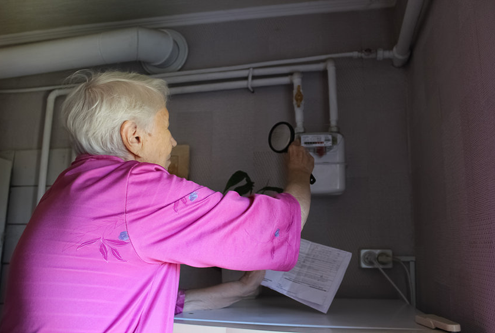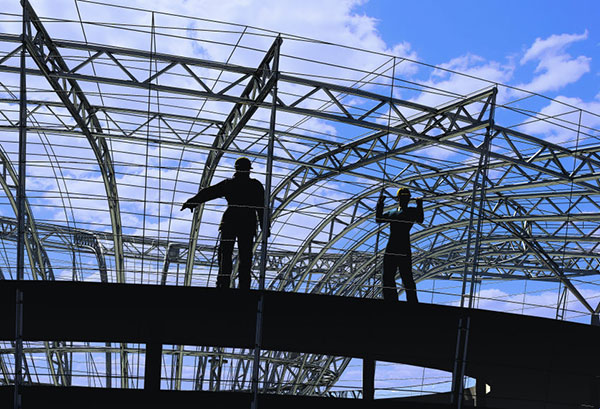The winter has landed. Storm Arwen slammed into the UK on Saturday, wreaking havoc with gusts of nearly 100 mph and heavy snow, leaving tens of thousands of homes without power. Strong winds blew down trees, killing three persons and causing damage to buildings and disrupting transportation. How does snowfall affect construction? Buildingspecifier.com editor Joe Bradbury discusses:
Following recent cold temperatures, the Met Office has issued yellow warnings of severe ice throughout huge swaths of England, including Newcastle, Manchester, London, and Cardiff.
It seems the snow is affecting everyone. Heavy snowfall caused lorries to become trapped and ploughs to be used in several areas, and left bar workers and Oasis imitation band Noasis stranded in the Tan Hill Inn in the Yorkshire Dales since Friday.
…even ‘I’m a Celebrity was cancelled!
But how does snow affect construction?
Although snow and freezing weather make building more difficult, construction workers continue to work anyway. Work is sometimes rescheduled when temperatures drop below zero, but the cold and snow aren’t usually the main worries.
Construction workers are typically more concerned about the mud and runoff than the snowfall itself. Erosion is a major worry, so when the snow melts, it causes water to run, which collects silt in the midst of the project.
Winter materials such as concrete blankets and composite wattles will currently be brought out by workers on site up and down the country.
Often, when snow is predicted, construction workers may stake a giant sock of fabric packed with wood chips down to the ground to protect the work beneath.
Concrete can be poured in the snow, but it cannot be poured on ice. On a frozen subgrade or with frozen aggregates, concrete cannot be laid. To place in cold temperatures at concrete temperatures between 10ºC and 29ºC at the time of placement, the water, aggregate, or both may need to be heated to a temperature of between 21ºC and 65ºC. The contractor must consider how the completed concrete will be protected from freezing and cracking, as well as how curing will be regularly monitored.
When the temperature drops below 4ºC degrees, the contractor will usually cover the concrete with the afore mentioned blankets, and sometimes even heaters. Under the covers, temperature recorders are frequently placed as well. This process can drastically slow down work.
Snow on the project is, in general, an inconvenience. It hides what you’re working on, and getting it out of the way takes a lot of effort. If the snow is only expected to last a few days, the contractor will usually take a few days off. The contractor will move it if it is going to be there for a long period. Contractors are typically given a specific number of weather days every month in their contract. They will normally take the time off if they haven’t previously used these days.
A matter of safety
Wind, freezing rain, and ice can make construction sites risky, increasing the number of accidents and injuries on the job.
Cold stress
Low temperatures, especially those at or below freezing, can be hazardous to one’s health. They have the potential to lower skin and internal body temperatures. Furthermore, if rain causes the skin to become damp, heat will be lost from the body, and the body may not be able to warm up. All of this can result in catastrophic illnesses, including irreversible tissue damage or, in the worst-case scenario, death. If workers are not appropriately protected from the elements when working outside, they may develop trench foot, frostbite, or hypothermia.
Falls
Falls are one of the most common construction site mishaps, and they can occur at any time of year. Winter weather, on the other hand, increases the chance of falling due to ice, damp and slippery surfaces. Ice can form on scaffolding, ladders, walkways, stairs, and work platforms when surfaces become cold. Workers may slip and fall, sometimes from great heights, resulting in injuries such as broken bones, fractures, traumatic brain injuries, and even death if these locations are not properly treated.
Winter driving accidents
Accidents on construction sites can happen just as easily as they do on the road. When working on a construction site, it’s easy to forget that the road’s winter driving restrictions still apply. It’s also worth remembering that, due to their size and weight, construction vehicles aren’t always as agile as cars.
Staying safe on site this winter
We can ensure our workers stay safe this winter by limiting any exposure to the elements by safeguarding construction personnel from injury by covering particular work areas from the elements.
It is also wise to keep up with weather updates and allow adequate time to carry out any necessary procedures to keep workers safe. The following measures can also be taken:
- Protecting any areas of the site that may be harmed by the weather
- Keeping construction workers warm by creating comfortable break rooms
- Scheduling outdoor work to be completed in shorter periods of time, so that workers are not exposed to the elements for prolonged periods
- Providing appropriate clothing so that while employees work outside, no part of their skin is exposed and they are adequately insulated to preserve body heat and avoid being affected by the cold
- Educating employees about how to work safely when the cold weather hits and what they themselves can do to avoid mishaps
- Examine the site for any new dangers that may have arisen as a result of the recent harsh weather
In summary
The construction industry has withstood many changes during the coronavirus pandemic, and now there is no shortage of projects to keep up with. However, as businesses strive to meet their deadlines, it’s critical to take the time to ensure that employees are safe throughout the colder months.
As diligent building specifiers and construction professionals, you most likely have safety procedures in place at all of your locations, but these procedures should be evaluated and updated specifically for the winter to ensure that your employees are as safe as possible.
Remember that finishing projects in the same amount of time as they would normally take in dry summer weather is neither feasible nor safe. It is therefore critical to create realistic schedules that take into consideration the reality that locations may be slippery, snowy, or wet. If necessary, give teams more time to accomplish their duties and remind them not to rush. Having workers trip and injure themselves on-site will simply add to the delay in meeting deadlines, therefore it’s far more productive to stay to a safer pace.















